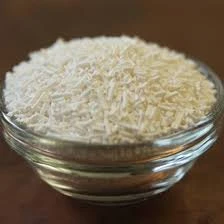
Exploring the Uses and Benefits of Acidity Regulators in Food Industry Applications
Understanding Acidity Regulator E300 A Comprehensive Overview
Acidity regulators play a crucial role in the food industry, ensuring that food products maintain their desired taste, texture, and shelf-life. Among various acidity regulators, E300, also known as ascorbic acid or vitamin C, stands out due to its multifaceted benefits and applications. In this article, we will explore what E300 is, its properties, applications, and the safety concerns surrounding its use.
What is E300?
E300, commonly referred to as ascorbic acid, is a naturally occurring organic compound with antioxidant properties. It is a water-soluble vitamin and is essential for many physiological functions in humans and animals. Ascorbic acid is synthetically produced for its use as a food additive, primarily due to its ability to enhance flavor, preserve color, and prevent spoilage.
Properties of E300
Ascorbic acid is characterized by its light yellow crystalline powder form. It has a slightly acidic taste, and its pH level typically ranges from 2.1 to 2.6, making it useful in controlling the acidity of food products. One of the noteworthy features of E300 is its antioxidant capacity, which helps to combat oxidative stress in food, thereby extending its shelf-life.
Another significant property of E300 is its role in preventing the oxidation of various food components, including fats and oils, which can lead to rancidity and off flavors. By scavenging free radicals, ascorbic acid helps in maintaining a product’s freshness, color, and nutritional value.
Applications of E300
E300 is widely used across a myriad of food products. Some of the primary applications include
1. Fruits and Vegetables E300 is commonly added to fruit juices and canned fruits to preserve color and freshness. It prevents browning in cut fruits and maintains their visual appeal.
acidity regulator 300

2. Beverages In soft drinks and other beverages, ascorbic acid serves as a stabilizer, enhancing flavors while also preventing oxidation that can spoil or discolor the drink.
3. Meat Products E300 is utilized in processed meats to enhance flavor and retard spoilage, helping to prolong shelf life and maintain quality.
4. Baked Goods Ascorbic acid is often included in bread-making processes as a dough conditioner, improving texture and volume while acting as an antioxidant.
5. Confectionery In the candy-making industry, E300 is helpful in prolonging the freshness and maintaining the taste of sweet treats.
6. Nutritional Supplements Beyond its use in food preparation, E300 is a popular ingredient in vitamins and dietary supplements due to its essential nature in human health.
Safety and Regulations
E300 is generally recognized as safe (GRAS) by various regulatory agencies, including the U.S. Food and Drug Administration (FDA) and the European Food Safety Authority (EFSA). However, as with any additive, there are guidelines and limits on its usage to ensure consumer safety. While E300 is beneficial in many food products, excessive consumption of ascorbic acid from supplements can lead to adverse effects such as gastrointestinal discomfort or increased risk of kidney stones.
Conclusion
Ascorbic acid, or E300, plays a vital role in the food industry, contributing to the preservation of food quality, safety, and nutritional content. Its versatility as an acidity regulator, antioxidant, and flavor enhancer makes it indispensable in various applications, from fresh produce to processed foods. Understanding its properties, uses, and regulatory status can help consumers and food manufacturers alike make informed choices regarding food safety and quality. As food technology continues to evolve, the importance of compounds like E300, which support both the preservation of food and overall health, will continue to rise.
-
Pure Sodium Dichloroisocyanurate Dihydrate | Powerful DisinfectantNewsAug.29,2025
-
Industrial Chemicals: Quality & Purity for Every IndustryNewsAug.28,2025
-
Nitrile Rubber Honoring Strict Production StandardsNewsAug.22,2025
-
Aspartame Ingredients Honoring Food Safety ValuesNewsAug.22,2025
-
Fertilizer for Balanced Plant NutritionNewsAug.22,2025
-
Cyanide Gold Processing with High Purity AdditivesNewsAug.22,2025
-
Formic Acid in Textile Dyeing ApplicationsNewsAug.22,2025
Hebei Tenger Chemical Technology Co., Ltd. focuses on the chemical industry and is committed to the export service of chemical raw materials.
-

view more DiethanolisopropanolamineIn the ever-growing field of chemical solutions, diethanolisopropanolamine (DEIPA) stands out as a versatile and important compound. Due to its unique chemical structure and properties, DEIPA is of interest to various industries including construction, personal care, and agriculture. -

view more TriisopropanolamineTriisopropanolamine (TIPA) alkanol amine substance, is a kind of alcohol amine compound with amino and alcohol hydroxyl, and because of its molecules contains both amino and hydroxyl. -

view more Tetramethyl Thiuram DisulfideTetramethyl thiuram disulfide, also known as TMTD, is a white to light-yellow powder with a distinct sulfur-like odor. It is soluble in organic solvents such as benzene, acetone, and ethyl acetate, making it highly versatile for use in different formulations. TMTD is known for its excellent vulcanization acceleration properties, which makes it a key ingredient in the production of rubber products. Additionally, it acts as an effective fungicide and bactericide, making it valuable in agricultural applications. Its high purity and stability ensure consistent performance, making it a preferred choice for manufacturers across various industries.





